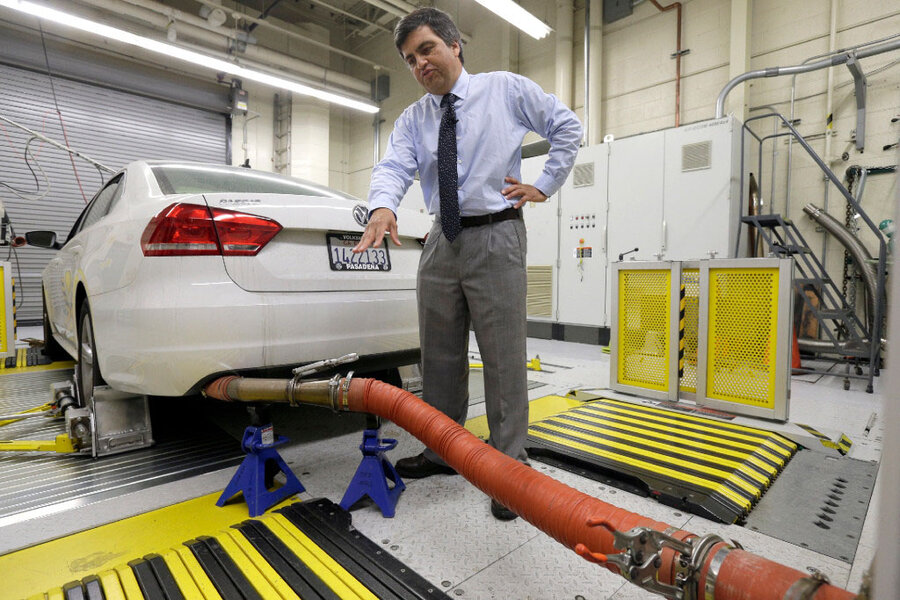In break with Trump administration, California commits to cleaner cars
Loading...
On Friday, the California Air Resources Board (CARB) voted to finalize new vehicle emissions rules for the model years 2022-2025.
Eight years from now, new cars and trucks sold in the Golden State will be required to have an average fuel economy of 54.5 miles per gallon. The CARB rules will also mean more “zero emission vehicles” powered by batteries and fuel cells, and tough new standards on particulate matter pollution.
The CARB didn’t come up with these guidelines on the spot. The Obama administration had sought to apply them nationally, but President Trump’s administration put them back under review. Now, environmentalists are looking to California to keep the higher emission standards from being tossed out.
“The public is bearing a huge cost” from vehicle emissions, said Bonnie Holmes-Gen of the American Lung Association of California at Friday’s meeting. “I urge California to keep us on track.”
If California succeeds, other states may follow. The sheer size of California’s market, and a unique waiver from the Clean Air Act, give it an outsize role in determining what comes out of your car's tailpipe. With this vote, it’s trying to raise those standards at the same moment when the feds and automakers want them eased.
This split has been decades in the making. In 1960, with the Los Angeles area choking on smog, California implemented the nation’s first-ever tailpipe emissions standards. When the Clean Air Act came along ten years later – with a prohibition on states imposing their own standards – Californians actually worried that federal standards would be too lax.
To that end, they secured a provision in the Act that allows California to seek waivers from the Clean Air Act’s prohibition, provided that its own vehicle standards are “at least as protective of public health and welfare as applicable federal standards.” In 2009, explained The Atlantic’s Robinson Meyer, the Obama administration granted the state such a waiver for greenhouse gas emissions.
That decision doesn’t end at the state line. The waiver provision allows other states to voluntarily impose California’s tougher standards. Thirteen states and Washington, D.C., explains Wired’s Alex Davies, have done just that with CARB’s emissions guidelines. Nine states are also enforcing its decisions on zero-emissions cars. Together, they account for 30 percent of all new vehicle sales in the United States.
In effect, “California doesn’t just mean California” when it comes to tailpipe laws, says Therese Langer, transportation program director at the American Council for an Energy-Efficient Economy. Even if the Trump Administration abandons the tougher standards at the federal level, a massive chunk of the US auto market will still fall under California’s standards, requiring automakers to build to those specifications.
This outcome, however, hinges on California keeping its Obama-era waiver. Ann Carlson, a professor of environmental law at UCLA, told the Atlantic’s Meyer that “I thought that [Scott] Pruitt’s testimony [at his hearing for the top EPA post] was sufficiently broad that it’s conceivable that EPA could just start denying its waiver authority for broader conventional pollutants.”
If that happens – spelling the end for regulations that, nationally, were projected to cut US oil consumption by 12 billion barrels and eliminate six billion metric tons of CO2 pollution – don’t expect environmentalists to go down without a legal fight, or for California to stand alone in taking on the Trump administration.
After CARB’s vote, Steven Flint, director of the New York Department of Environmental Conservation, voiced the Empire State’s commitment to California’s quest for cleaner cars. “We’ve come a long way together,” he told The New York Times. “We’re with you, and we believe in what you’re doing.”








